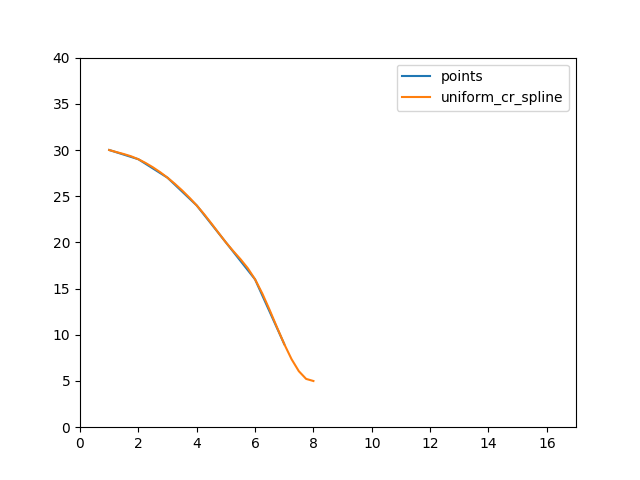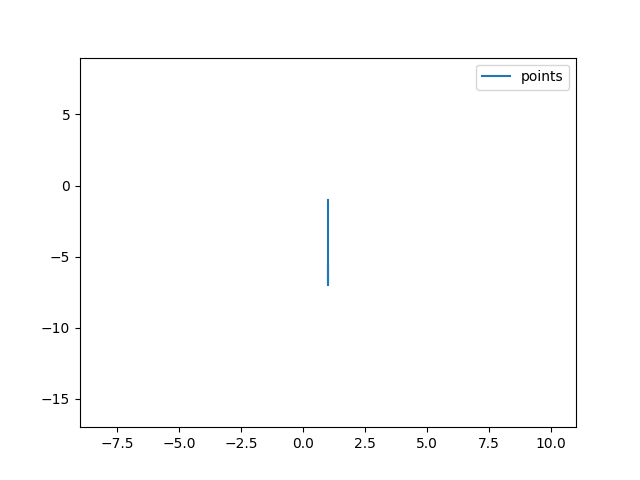Without digging too deep into the numbers, I think this is working as intended. The tangent is the rate of change of the spline -- but it's the rate of change with respect to T, not with respect to X.
Your X values increase by 1 for each point, and this library gives one unit of T for each input point, so I would expect the X component of the tangent to always be 1. Eyeballing the graph, it looks like all the points have X=1
The curvature is the rate of change of the tangent, again with respect to T. Because the tangent is 1 at every data point, it is not changing, and its rate of change is 0. And eyeballing the curvature graph, all the points have X=0



Hello i am trying to use the library to fit splines on some data. It looks like the derivatives are not working properly. Maybe i am using the library in the wrong way. From what i can see the time is not exactly related to the x of each point. I compute the first derivative at time t : auto d1 = ucbs.getTangent(u).tangent; I compute the second derivative at time t : auto d2 = ucbs.getCurvature(u).curvature;
then i extract x and y and plot them. The data are really simple:
(x,y); (1, 30); (2, 29); (3, 27); (4, 24); (5, 20); (6, 16); (7, 9);
here the curve fitted with an uniform bspline and the two derivatives from the library:


can you help me? Am i using the lib in the wrong way?